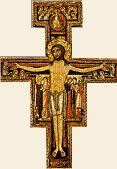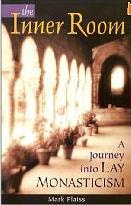
Definition
Latin for divine reading, spiritual reading, or ‘holy reading’
Represents a traditional Christian practice of prayer and scriptural reading
A manner of praying with Scripture that calls one to:
o Study
o Ponder
o Listen
o Pray and even sing and rejoice
From God's Word, within the soul.
We gradually let go of our own agenda and open ourselves to what God wants to say to us
Objective of Lectio Divina
-to give rise to a communion with the Triune God
-to deepen the knowledge of God’s Word
-to let the Word of God penetrate us that we may grow in an intimate relationship with the Lord
History and Overview
The monastic rules of Sts. Pachomius, Augustine, Basil and Benedict made the practice of divine reading, together with manual labor and participation in liturgical life, the triple base of monastic life.
The systematization of spiritual reading into four steps dates back to the 12th century. Around 1150, Guigo, a Carthusian monk, wrote a book titled ‘The Monk’s Ladder’ (Scala Claustralium) wherein he set out the theory of the four rungs: reading, meditation, prayer and contemplation.
Guigo described the stages which he saw as essential to the practice of Lectio Divina. There are various ways of practicing Lectio Divina either individually or in groups but Guigo's description remains fundamental. He said that the first stage is lectio (reading), followed by meditation (reflection), then oratio (response) and lastly contemplation (rest)
In the early monastic tradition contemplation was understood in two ways. First was theoria physike, the contemplation of God in creation – God in ‘the many.’ Second was theologia, the contemplation of God in Himself without images or words – God as ‘The One.’ From this perspective lectio divina serves as a training-ground for the contemplation of God in His creation.
In contemplation, we cease from interior spiritual doing and learn simply to be, that is to rest in the presence of our loving Father. Just as we constantly move back and forth in our exterior lives between speaking and listening, between questioning and reflecting, so in our spiritual lives we must learn to enjoy the refreshment of simply being in God's presence, an experience that naturally alternates (if we let it!) with our spiritual practice.
In ancient times, contemplation was not regarded as a goal to be achieved through some method of prayer, but was simply accepted with gratitude as God's recurring gift. At intervals the Lord invites us to cease from speaking so that we can simply rest in his embrace. This is the pole of our inner spiritual rhythm called contemplation.
In lectio divina we offer ourselves to God; and we are people in motion. In ancient times this inner spiritual motion was described as a helix - an ascending spiral. Viewed in only two dimensions it appears as a circular motion back and forth; seen with the added dimension of time it becomes a helix, an ascending spiral by means of which we are drawn ever closer to God. The whole of our spiritual lives were viewed in this way, as a gentle oscillation between spiritual activity and receptivity by means of which God unites us ever closer to Himself. In just the same way the steps or stages of lectio divina represent an oscillation back and forth between these spiritual poles. In lectio divina we recognize our underlying spiritual rhythm and discover many different ways of experiencing God's presence - many different ways of praying. to be continued...











Thank you.
ReplyDeleteAs a Benedictine oblate I think lectio divina is one of the best ways for lay people to see the unity of the Christian life — that there is not — as is sometimes felt the “real world” of how we live and another world of our faith. At least for me, lectio divina is a good, concrete practice. Through lectio divina I am able to see and partake in some measure of the one, full Christian life in God.
Recently someone asked how they could learn to listen to God. When the questions are “what can I do,” lectio divina is a very good answer.
And of course, lectio is much more than I have described and by the same token there are many other ways to get closer to God and the full Christian life.
If we desire getting closer to God... we need understanding definition of God! The meaning of God... definition of God is best explained in Bhagavad Gita of Hinduism... the most sacred scripture existing on mother earth! As detailed in Bhagavad Gita god almighty is not form of human beings. The sum total of all purified soul atmans in cosmos at a given moment of time is what we know as God Almighty!
ReplyDeleteThis enormous cluster of cosmic primordial power much beyond comprehension of all human beings is Nirakaar in form (having no form)! God Almighty is not form of human beings. God Almighty always acts as a Dhrishta (onlooker) never interfering with creation of his! God Almighty exists in all human beings in miniscule form as our soul atman... the spirit within!
Getting closer to God simply means merging our inner self with larger whole... God Almighty himself! When human beings gained enlightenment (kaivalya jnana)... it announced end of cosmic life for soul atman... the spirit within! Reaching 8.4 millionth manifestation... the last in cosmic life cycle is goal of every soul atman... the spirit within!
For human beings to gain enlightenment... assimilating wisdom contained in Bhagavad Gita is foremost necessity! Only by knowing Bhagavad Gita of Hinduism human beings gained enlightenment (reached stage of kaivalya jnana)... never otherwise! The contents of Bhagavad Gita can never be understood literally. All 700 shlokas verses contained in Bhagavad Gita suffice for mankind reaching stage of enlightenment... and finally salvation (moksha)!
The knower of Bhagavad Gita finally becomes knower of all... gains omniscience for all practical purposes! Enlightenment is reached via path of spirituality... never religion! Understanding difference between religion and spirituality is foremost necessity of the day! Most human beings on mother earth confuse spirituality with religion! God Almighty can never be reached via path of bhakti yoga... path of rituals... path of religion!
For getting closer to God... for become one with God one needs traveling path of jnana yoga (absolute wisdom)!